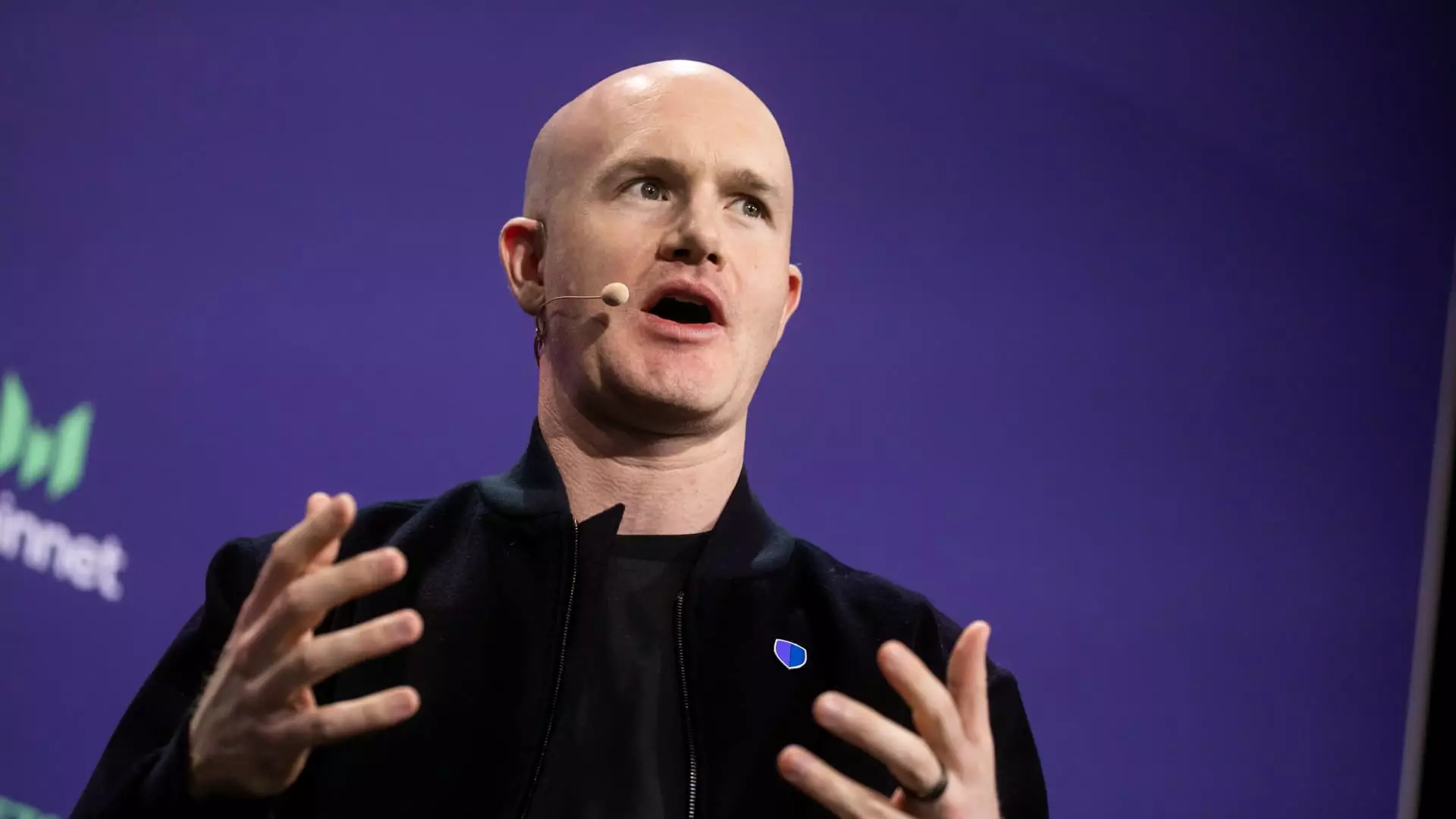In an audacious declaration, Brian Armstrong, the CEO of Coinbase, articulated a vision for the future of finance where cryptocurrency would dominate traditional financial services. For a company that has primarily functioned as a cryptocurrency exchange, Armstrong’s ambition to elevate Coinbase into one of the foremost financial services firms globally signifies not only an evolution of the company but a potential upheaval in the entire financial ecosystem. The rapid adoption of cryptocurrency by established players highlights an accelerating shift that could redefine finance in unprecedented ways.
Armstrong believes that crypto is “eating” financial services, expressing a sentiment that inherently critiques the traditional systems’ inadequacies in adapting to a digital, decentralized financial landscape. This sentiment reflects a broader narrative—a frustration with outdated mechanisms that have failed to capitalize on technological advancements. Within the next five to ten years, Armstrong envisions Coinbase at the forefront, aimed at becoming the leading financial services application across diverse market segments, including retail customers, small to medium-sized enterprises (SMEs), institutional players, and developers. This ambitious projection poses an essential question: is there room for traditional finance as we know it in a crypto-dominated world?
The Fast-Paced Adoption of Crypto
Armstrong’s assertion that traditional financial institutions are embracing digital currencies indicates a significant pivot in an industry historically resistant to change. The recent decisions from regulatory bodies like the Office of the Comptroller of the Currency (OCC), the Federal Reserve, and the Federal Deposit Insurance Corporation (FDIC) to ease restrictions on banks dealing with crypto assets further illustrate this shift. It feels as though the dam is breaking; regulatory frameworks that once acted as barriers are now evolving to catch up with a technology that has captured public and institutional imagination. The loosening of these constraints aligns with a growing recognition that cryptocurrency is not merely a fad, but a legitimate and transformative asset class.
This influx of interest from traditional players such as BlackRock, Stripe, and PayPal is emblematic of a broader acceptance of cryptocurrency as a viable financial instrument. Bank of America, under the leadership of CEO Brian Moynihan, hints at the possibility of launching a stablecoin pending suitable regulatory frameworks, suggesting that major banks might eventually intertwine with digital currencies. With such institutions likely to adopt cryptocurrency in some form, Armstrong’s vision of a future dominated by these technologies appears less like a distant fantasy and more like an impending reality.
Mainstream Growth Through Stablecoins
Stablecoins, which offer a bridge between the volatility of traditional cryptocurrencies and the stability of fiat money, have emerged as pivotal players within this transformative landscape. Coinbase’s partnership with Circle to promote USDC as a leading stablecoin epitomizes this strategic shift, which not only enhances their revenue streams but positions them as key players in the financial ecosystem. The data reveals a remarkable growth trajectory; stablecoin revenue surged by 50% year-on-year in Q1, illustrating their increasing importance and acceptance.
However, Armstrong raises valid concerns over the proliferation of individual entities launching their own stablecoins. While attempting to tailor solutions to their needs, banks risk fragmenting the ecosystem, which could lessen the network effects that bolster adoption and efficiency. When Barnacles of proprietary systems attach themselves to a nascent industry, the result can be a fragmented, inefficient marketplace that stifles innovation. Hence, for Armstrong, the path to success lies in collaboration and interoperability among financial institutions, not isolated initiatives.
The Road Ahead: Is the Future Bright?
Armstrong’s foresight reflects a mindset that championing innovation is essential for survival in today’s fast-evolving financial landscape. Traditional institutions can no longer afford to shy away from cryptocurrency. Instead, they must proactively seek collaborations to remain relevant. However, this shift is not without its challenges; regulators, market volatility, and security concerns remain prominent hurdles that could impede progress.
Critically, the move towards adopting cryptocurrency signals an urgent need for tenant vigilance regarding the implications for consumers and investors alike. Will the rush towards crypto lead to greater financial accessibility, or will it exacerbate existing inequalities? The promise of decentralization is enticing, yet the responsibility that accompanies such a revolutionary transformation must not be underestimated. As Coinbase surges ahead, the onus remains on industry leaders to cultivate a landscape that prioritizes ethical practices, user trust, and the fundamental principles of financial inclusivity.
Brian Armstrong’s ambition for Coinbase to transcend its role as mere cryptocurrency exchange is audacious but reflects a broader zeitgeist—one seeking to redefine financial services through technological evolution. The journey may be fraught with challenges, but the potential rewards could be monumental in shaping a more inclusive, streamlined financial ecosystem.

